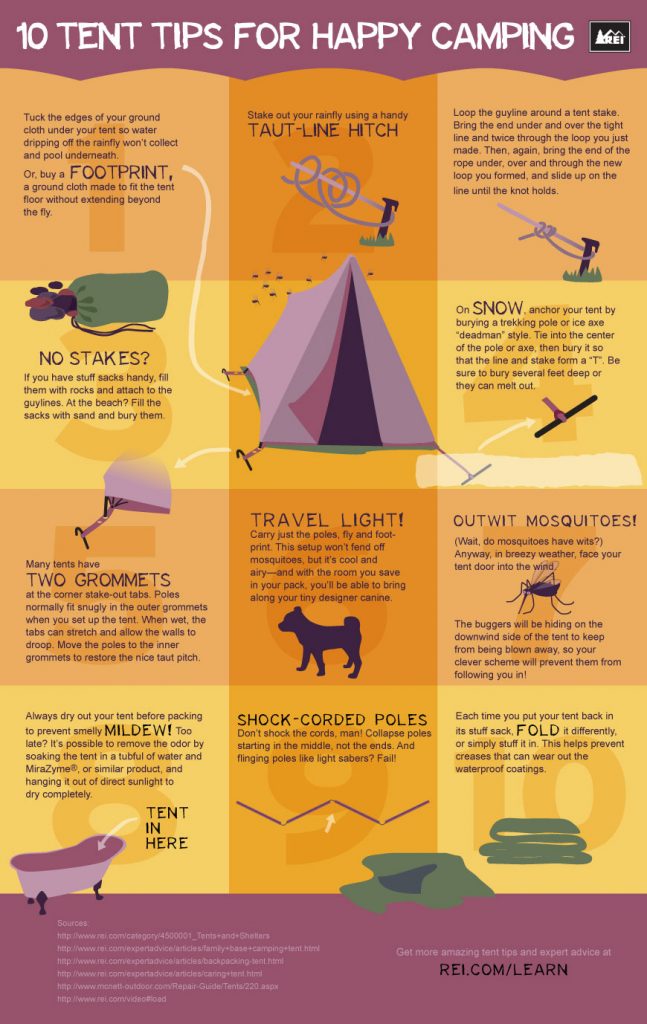A double-wall design that's both breathable and waterproof. They can be much more comfortable than single-wall camping tents in wintertime however can be much less sizable and open up sights less.
Developed to hold up against high winds and shed snow. They might also have thicker posts and extra guylines to enhance strength.
Whether you're glamping or backpacking, these camping tents can take care of a range of winter months conditions. They're excellent for those seeking a comfy and warm resort in the backcountry.
1. Weatherproofing
Several tents include waterproofing that's augmented by polyurethane finishings and sturdy water repellent (DWR) treatments. Ultimately, however, modifications in temperature level and prolonged exposure to sunshine can degrade the camping tent's safety layers. Refreshing these with joint sealant or a DWR treatment can help secure your camping tent from wetness damages and lengthen its useful life.
When packing up your camping tent, make the effort to very carefully fold and fit each shockcorded pole area into area. This will certainly prevent undue anxiety that can compromise or chip the post areas and bring about structural problems when you established camp.
Furthermore, utilize the Leave No Trace principle when selecting camping areas. Select places that are free of rocks, want cones and other particles that can penetrate or abrade the outdoor tents flooring and fly. Also consider bringing an impact, which is a custom-cut ground cloth designed specifically for your tent's layout and will secure it from dirt, grit, pebbles and other sharp objects.
2. Ventilation
If you are camping in the Everglades' moisture or Death Valley's warm, you require an outdoor tents with excellent air flow. Air flow is a crucial consider maintaining comfort and eliminating mold and mildew and mildew that can make your outdoor tents pointless.
The air flow system of a four-season camping tent is developed to eliminate warm, damp air and change it with cooler, drier air. This air exchange minimizes condensation by eliminating wetness from the air before it can settle on the walls and ceiling of your outdoor tents.
To ensure your camping tent has appropriate ventilation, look for breathable materials and flexible vents. Likewise, raise your outdoor tents slightly off the ground to improve air flow. An additional key element of a great air flow system is making use of a cooktop jack, which supplies a risk-free departure factor for guy lines your tent's smoke pipeline to stop carbon monoxide gas poisoning.
3. Livability
While a 4 period camping tent may not be the best alternative for ultra-light backpackers, it is crucial for those intending to camp year-round. Purchasing this type of shelter conserves money on separate arrangements and minimizes gear turnover. It additionally allows you to explore landscapes at various seasons, opening up silent off-season experiences and beautiful winter season terrain.
If you select a strong and large 4 period outdoor tents like the KUIU Storm Star 2 or the Samaya 2.0, make sure that it provides sufficient weather condition security. This consists of a durable structure, solid poles and fabrics developed to withstand high winds and dropped snow. Search for seams that are double-stitched and surfaces like water repellent, mold and mildew & UV resistance finishings that protect your financial investment from the aspects.
In addition, select a double-wall design for the very best livingability. Single-wall models can be water-proof but have concerns with condensation. They can likewise be too hot for summer season and not well suited to rainfall.
4. Storage
Saving your camping tent in a shaded location safeguards it from the rough UV rays of sunlight. Long term exposure to these rays can weaken and compromise the textile in time, making the outdoor tents less sturdy. It's also vital to routinely examine the stored camping tent for signs of wetness and intrusive insects.
Storage space tents are typically easier to use than irreversible structures since they do not require any type of adjustments to your home. They additionally offer the versatility of relocating them around your outdoor area to resolve different storage requirements.
4-season outdoors tents are developed to withstand rough weather. They usually include rigid structures to remain secure in high winds and thicker wall surfaces to provide warmth versus snow and tornado winds. They strike a balance between important features like weather condition defense, weight, and interior area to fit your details adventure goals. The NEMO Kunai 2 and Hilleberg Nammatj 2 are both examples of 4-season tents that balance weather condition defense, weight, and livability.
